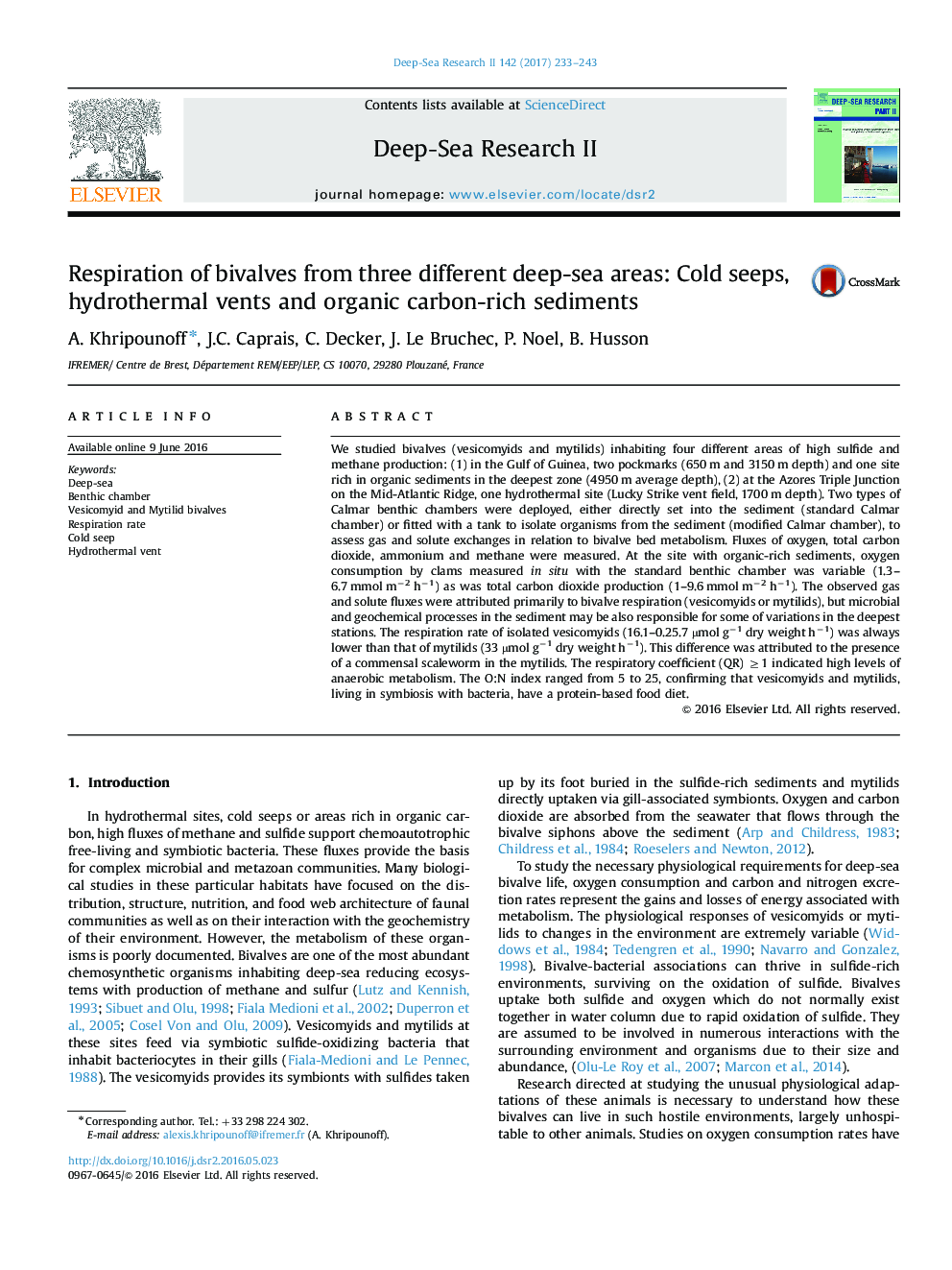| کد مقاله | کد نشریه | سال انتشار | مقاله انگلیسی | نسخه تمام متن |
|---|---|---|---|---|
| 5764811 | 1626400 | 2017 | 11 صفحه PDF | دانلود رایگان |
We studied bivalves (vesicomyids and mytilids) inhabiting four different areas of high sulfide and methane production: (1) in the Gulf of Guinea, two pockmarks (650 m and 3150 m depth) and one site rich in organic sediments in the deepest zone (4950 m average depth), (2) at the Azores Triple Junction on the Mid-Atlantic Ridge, one hydrothermal site (Lucky Strike vent field, 1700 m depth). Two types of Calmar benthic chambers were deployed, either directly set into the sediment (standard Calmar chamber) or fitted with a tank to isolate organisms from the sediment (modified Calmar chamber), to assess gas and solute exchanges in relation to bivalve bed metabolism. Fluxes of oxygen, total carbon dioxide, ammonium and methane were measured. At the site with organic-rich sediments, oxygen consumption by clams measured in situ with the standard benthic chamber was variable (1.3-6.7 mmol mâ2 hâ1) as was total carbon dioxide production (1-9.6 mmol mâ2 hâ1). The observed gas and solute fluxes were attributed primarily to bivalve respiration (vesicomyids or mytilids), but microbial and geochemical processes in the sediment may be also responsible for some of variations in the deepest stations. The respiration rate of isolated vesicomyids (16.1-0.25.7 µmol gâ1 dry weight hâ1) was always lower than that of mytilids (33 µmol gâ1 dry weight hâ1). This difference was attributed to the presence of a commensal scaleworm in the mytilids. The respiratory coefficient (QR) â¥1 indicated high levels of anaerobic metabolism. The O:N index ranged from 5 to 25, confirming that vesicomyids and mytilids, living in symbiosis with bacteria, have a protein-based food diet.
Journal: Deep Sea Research Part II: Topical Studies in Oceanography - Volume 142, August 2017, Pages 233-243
